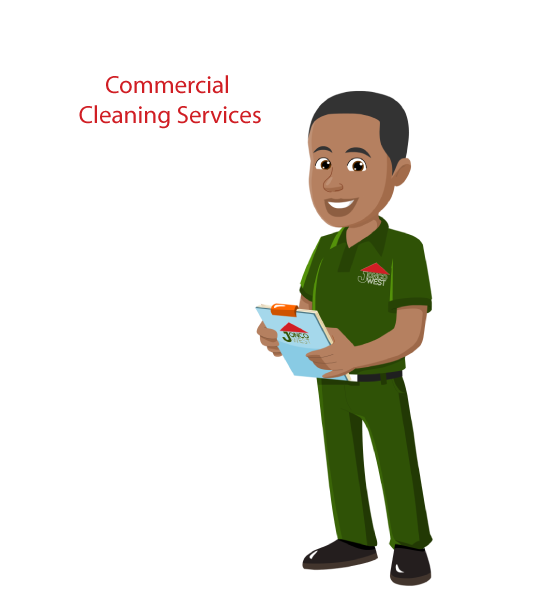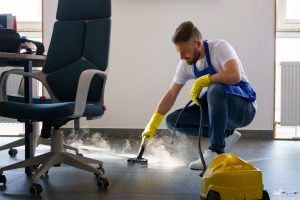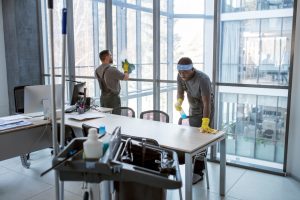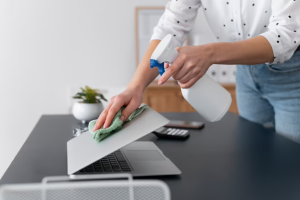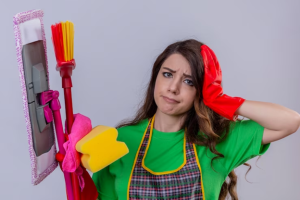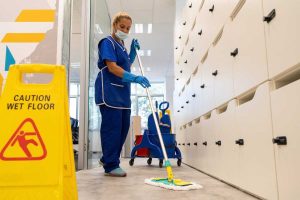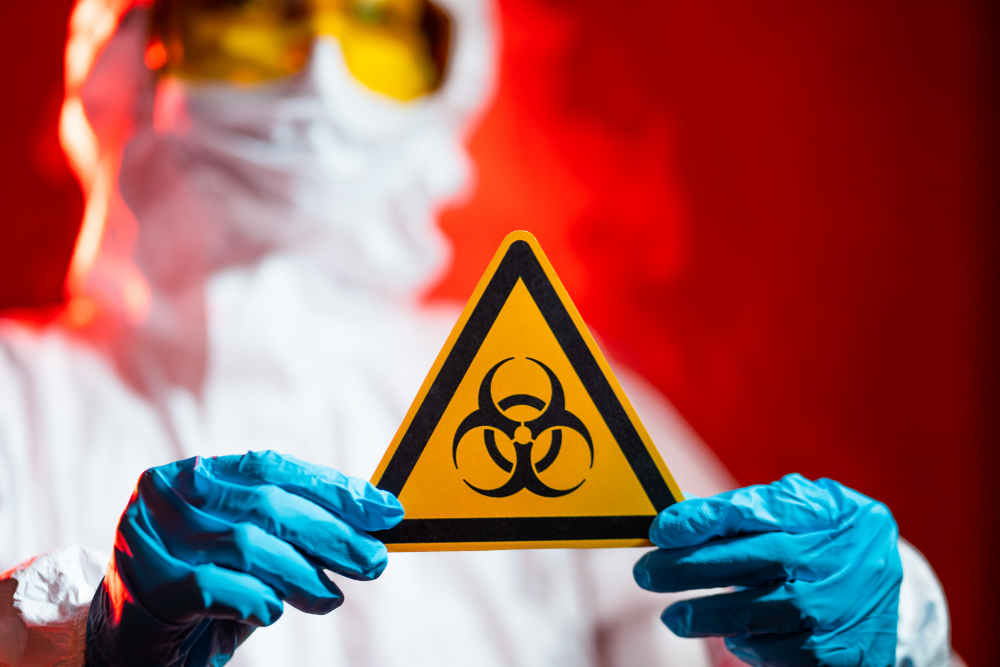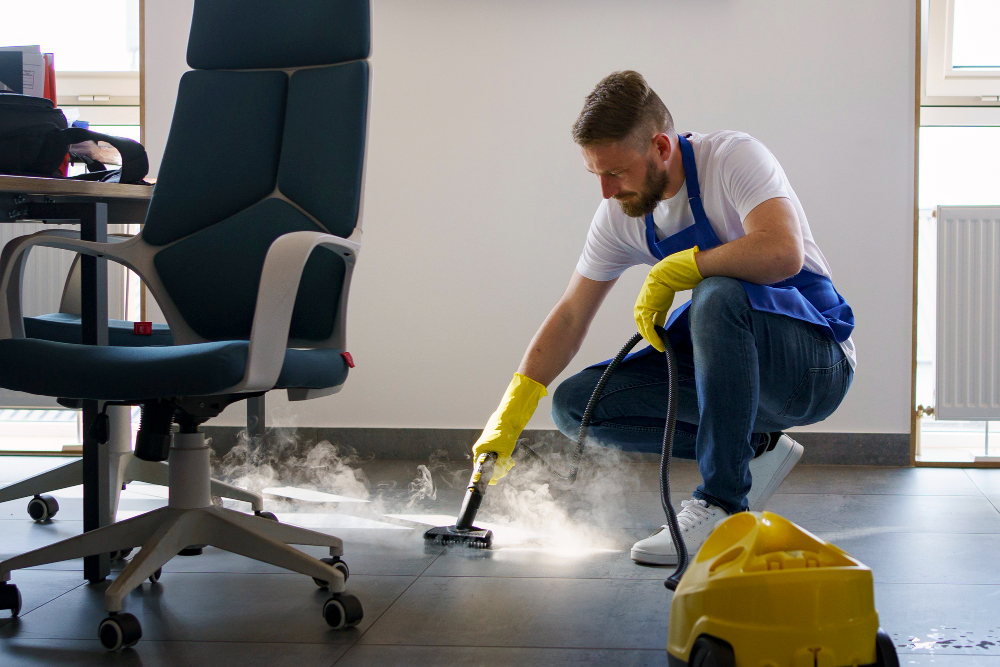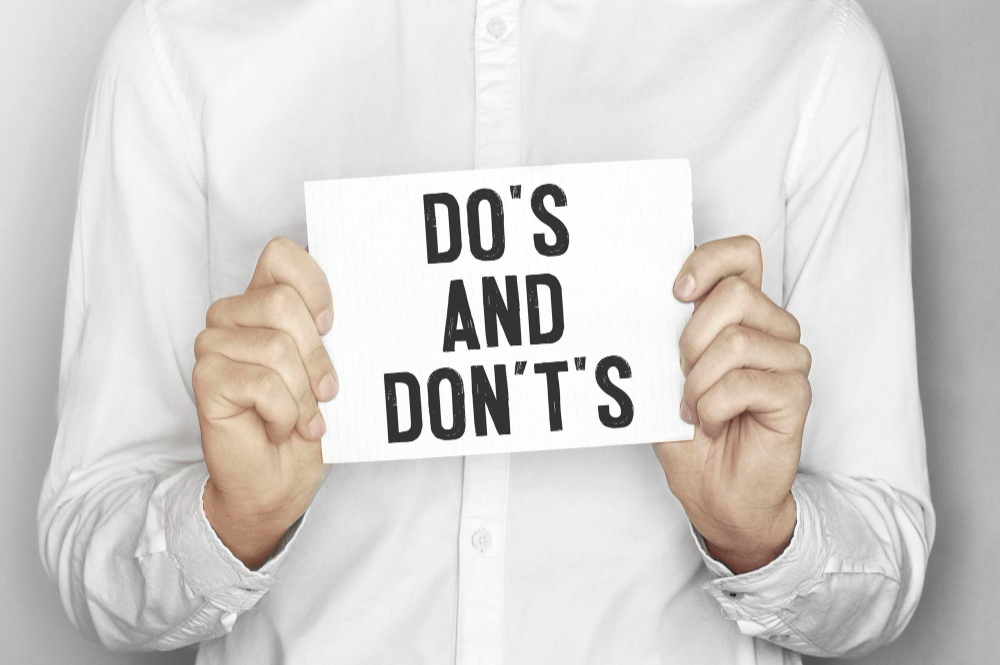The pandemic put a spotlight on cleaning, sanitizing, disinfecting, and sterilizing. It made us more aware of the cleanliness of our homes, and made employers take a closer look at facility sanitizing and disinfecting practices. We’ll compare these four terms more closely so you can be sure what type of services your facility needs.
Cleaning
Cleaning refers to removing visible dirt, dust, and other debris from facility surfaces. Typically a wet cloth or wipe is used to wipe down surfaces, either with water alone or with soap. For example, wiping down a dirty breakroom table with a wet rag.
Cleaning surfaces doesn’t necessarily kill germs but might remove some of them. Plus, cleaning helps other steps be more effective (sanitizing, disinfection, and sterilizing).
Sanitizing
You can sanitize by cleaning, disinfecting, or both. The true definition of sanitizing refers to lowering the number of germs to a safe level. The “safe level” for your facility depends on if you have specific workplace requirements or public health standards. As a result, sanitizing practices vary between facilities. For example, you could wipe down a desk using antibacterial wipes to sanitize it or use a chemical disinfectant to sanitize workplace floors.
Disinfecting
Disinfecting prevents the spread of infection and germs by using chemicals to kill them. Plus, disinfectants are the only products the EPA approves to kill viruses on hard surfaces. While sanitizers can be used on hard surfaces as well, they don’t always disinfect.
Disinfectants can vary, so you want to make sure you select the right type for your facility. Typically the label lists what type of bacteria and viruses the disinfectant kills or inactivates. For example, restaurants, gyms and medical facilities need to kill dangerous bacteria and viruses that can cause harm, such as salmonella, MRSA and COVID-19. The EPA and the CDC offer information about which products to use to kill certain germs.
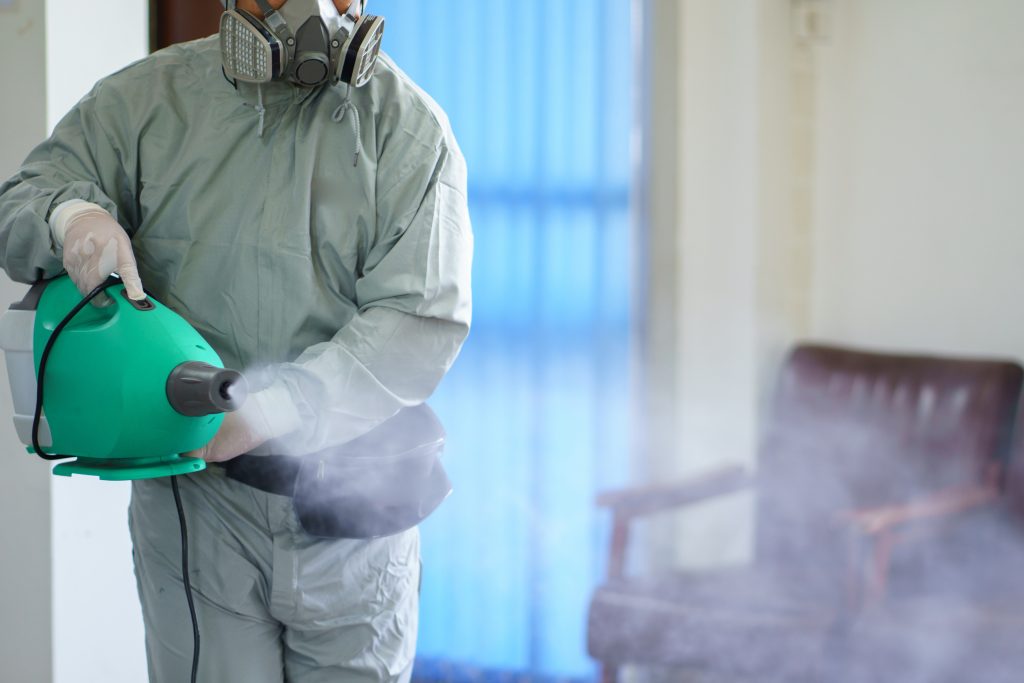
Sterilizing
For some facilities, like surgical rooms and laboratories, sterilizing is necessary. Sterilizing destroys or eliminates all forms of microbial life–not only bacteria or viruses. Sterilizing is a specialized service that isn’t required in everyday homes.
Which Method to Use?
Let’s summarize what you’ve read:
- Cleaning removes visible dirt, dust and other debris from facility surfaces.
- Sanitizing removes surface bacteria.
- Disinfecting kills harmful surface bacteria and viruses.
- Sterilizing kills all surface microorganisms.
It’s important to understand the differences between cleaning, sanitizing, disinfecting, and sterilizing so your facility’s needs get met. Disinfecting does not necessarily clean dirty surfaces or remove germs, so it’s best to clean and disinfect. Cleaning alone doesn’t necessarily disinfect or sanitize surfaces. In general, a combination of products and services can help you meet your facility’s needs.
No matter how big or small your facility’s cleaning, sanitizing or disinfecting needs are, Joncowest has you covered! Contact us today to discuss how we can help!

